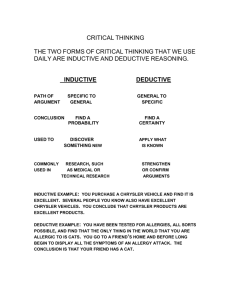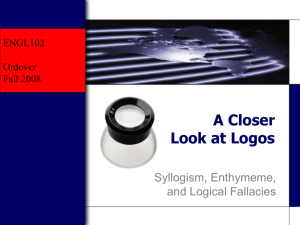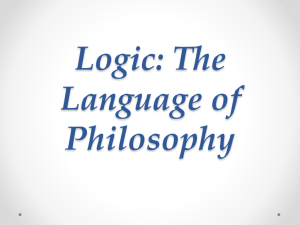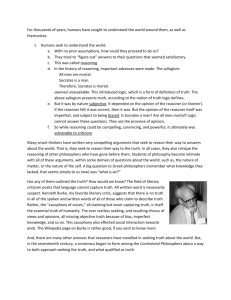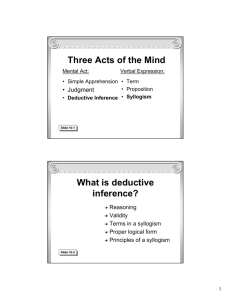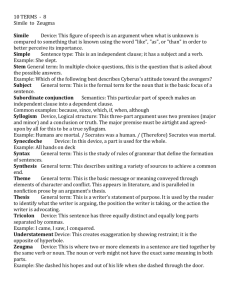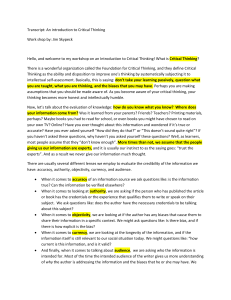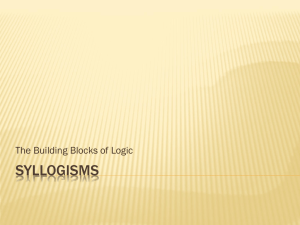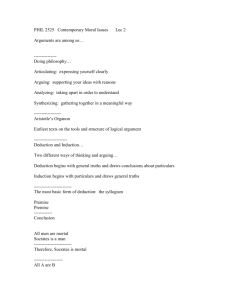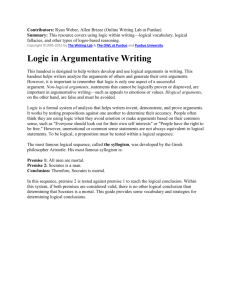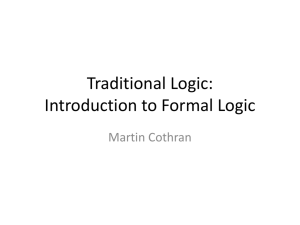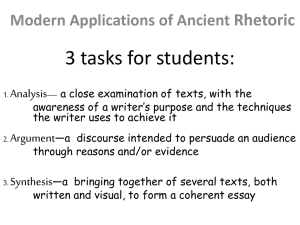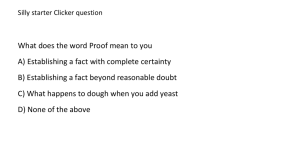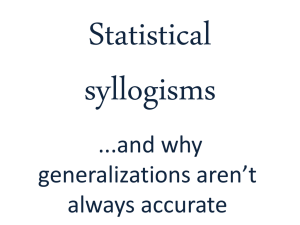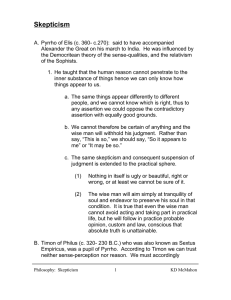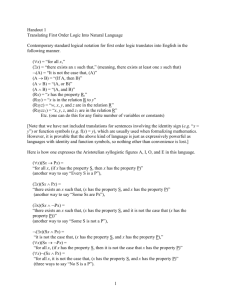Reading notes for Carroll`s Symbolic Logic
advertisement
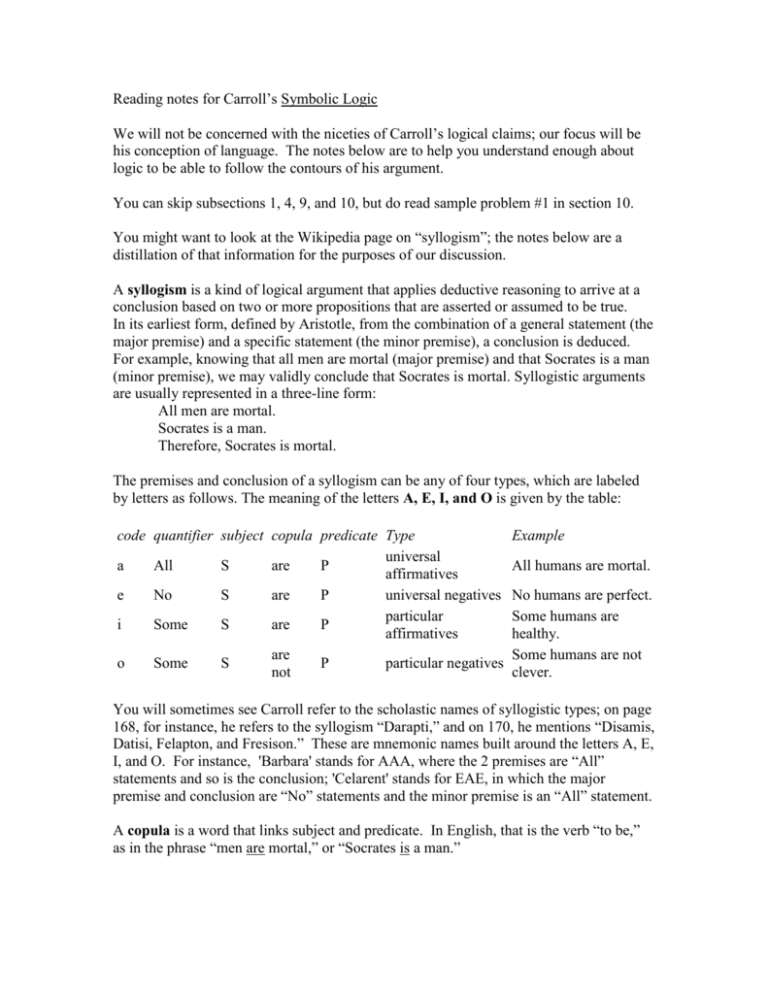
Reading notes for Carroll’s Symbolic Logic We will not be concerned with the niceties of Carroll’s logical claims; our focus will be his conception of language. The notes below are to help you understand enough about logic to be able to follow the contours of his argument. You can skip subsections 1, 4, 9, and 10, but do read sample problem #1 in section 10. You might want to look at the Wikipedia page on “syllogism”; the notes below are a distillation of that information for the purposes of our discussion. A syllogism is a kind of logical argument that applies deductive reasoning to arrive at a conclusion based on two or more propositions that are asserted or assumed to be true. In its earliest form, defined by Aristotle, from the combination of a general statement (the major premise) and a specific statement (the minor premise), a conclusion is deduced. For example, knowing that all men are mortal (major premise) and that Socrates is a man (minor premise), we may validly conclude that Socrates is mortal. Syllogistic arguments are usually represented in a three-line form: All men are mortal. Socrates is a man. Therefore, Socrates is mortal. The premises and conclusion of a syllogism can be any of four types, which are labeled by letters as follows. The meaning of the letters A, E, I, and O is given by the table: code quantifier subject copula predicate Type universal a All S are P affirmatives e No S are P universal negatives particular i Some S are P affirmatives are o Some S P particular negatives not Example All humans are mortal. No humans are perfect. Some humans are healthy. Some humans are not clever. You will sometimes see Carroll refer to the scholastic names of syllogistic types; on page 168, for instance, he refers to the syllogism “Darapti,” and on 170, he mentions “Disamis, Datisi, Felapton, and Fresison.” These are mnemonic names built around the letters A, E, I, and O. For instance, 'Barbara' stands for AAA, where the 2 premises are “All” statements and so is the conclusion; 'Celarent' stands for EAE, in which the major premise and conclusion are “No” statements and the minor premise is an “All” statement. A copula is a word that links subject and predicate. In English, that is the verb “to be,” as in the phrase “men are mortal,” or “Socrates is a man.” If a statement includes a term such that the statement is false if the term has no instances, then the statement is said to have existential import with respect to that term. In particular, a universal statement of the form All A is B has existential import with respect to A if All A is B is false when there are no As. If "Monica claims all her books were Pulitzer Prize winners," is she claiming that he wrote any books? If not, then is what she claims true? Suppose Joe says none of his friends are stupid; is that true if he has no friends? Do you see any points of similarity between Carroll’s discussion in section 2, “The ‘Existential Import’ of Propositions,” and Alice’s conversation with Humpty Dumpty? On the face of it, Carroll ‘s logical “method” aims simply to making it easier to manage complicated series of premises. Can you speculate as to other reasons he might have developed a scheme of this kind? Are there any social/political overtones to his language, metaphors, and examples?
